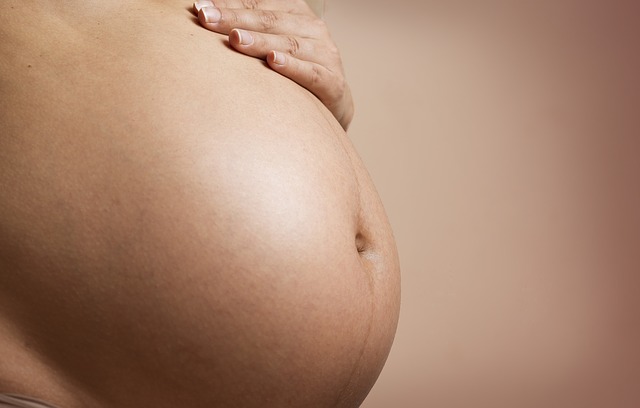
TORONTO — The sudden death of Saskatchewan curler Aly Jenkins is shedding light on a devastating complication of childbirth that some doctors say could benefit from a national surveillance system to track maternal deaths and suggest fixes.
Jenkins’ family and teammates were told the 30-year-old athlete died Sunday of an amniotic fluid embolism while labouring with her third child. She reportedly fought for hours as doctors tried to save her until her heart gave out.
Medical observers describe the relatively rare phenomenon in which amniotic fluid enters the blood stream as a particularly calamitous complication that sets off a cascade of problems. Those include issues with blood coagulation and constriction of the blood vessels that feed the lungs, which can lead to severe respiratory failure and heart failure.
Dr. John Kingdom says he’s seen it twice in his 35 years in obstetrics, estimating it affects one in 10,000 to 20,000 deliveries, and pegging the fatality rate at more than 50 per cent. Survival largely depends on the resources at hand when crisis strikes.
“Patients start bleeding either during surgery or from their IV puncture sites or their eyes or their gums,” says Kingdom, a high-risk obstetrician at Toronto’s Mount Sinai Hospital where they do 7,500 deliveries a year.
“The patient gets cardiovascular collapse, hypoxia (oxygen deficiency) and coagulopathy all in one go. There’s so much going wrong very quickly that you can see why people can die despite heroic efforts by all of the appropriate people to try and help.”
Any breathing or heart issues suffered by the mother would automatically be experienced by the baby as well, he adds, and the only way either survive is with the help of a highly effective medical team ready to immediately deliver anesthesia, intensive care, resuscitation and blood reserves.
If the mother is fully dilated, the baby may be delivered by vacuum or forceps. Otherwise, delivery must occur by emergency caesarean section. In the worst outcomes, the child may be born dead or asphyxiated.
Meanwhile, a mother whose breathing and blood pressure fails is at risk of brain injury and organ failure unless doctors can get the lungs working by putting a tube down her throat.
Kingdom says he’s never experienced a maternal death and he sympathized with what he expected were valiant efforts by Jenkins’ medical team.
“It would take 15 smart people present within five minutes doing all the right things, all at the same time to have a real chance of survival,” says Kingdom, also head of the University of Toronto department of obstetrics and gynecology.
Jenkins’ daughter Sydney ended up in the neonatal intensive care unit, and a Facebook post by Jenkins’ aunt said she was still intubated late Wednesday but was steadily improving.
Dr. Jon Barrett, head of the maternal-fetal medicine program at Sunnybrook Health Sciences Centre, says mothers and babies who survive can also face lasting consequences, recalling one of his patients who survived but spent months in intensive care and suffered brain damage.
Barrett says associated risk factors for amniotic fluid embolism include older moms, caesarean delivery, moms who have increased amniotic fluid, and abnormal placentas that separate from the uterus or cover the cervix.
He adds that it generally emerges during labour, but can also happen after, and is more common in twin births, at a rate of 14.8 per 100,000 twin deliveries versus 6 per 100,000 singleton deliveries.
Dr. Jennifer Blake, CEO of the Society of Obstetricians and Gynaecologists of Canada says national data is sorely lacking on the condition, as well as all other severe maternal complications that kill and injure mothers every year.
For more than a decade, the society has been pressing for a national surveillance system like those in the United Kingdom and the United States, where she says deadly and near-deadly incidents are recorded and analyzed for gaps in care and to determine more effective practices.
Blake says Canada’s reported rate underestimates the true scope of maternal deaths since it doesn’t include data from Quebec, likely misses cases from more remote communities and is gathered inconsistently, with some provinces collecting information for the first 42 days after delivery, and other provinces for 90 days.
She’d like to see data collected for a full year after birth to capture postpartum depression leading to suicide, homicide where pregnancy has been a factor, and drug overdoses in cases where a new mother might resume her substance abuse after abstaining during pregnancy.
In addition, Blake says the country needs a detailed confidential inquiry into each case to prevent future deaths.
“Reporting the data for rare events is never that accurate. What you have to do is be able to go into the details of each case and say: ‘What led to this happening? What happened when it happened? What could have been done differently? By whom?’ And see what interventions you might have been able to make that would have led to a different outcome,” says Blake.
Kingdom agrees, believing that only a broad tracking system can allow medical professionals to learn from these tragedies. He partly attributes inaction to fears about the legal and political ramifications of exposing missteps.
“In Ontario, there are lots of small maternity units delivering 100, 200, 300 babies a year. If you had amniotic fluid embolism in that unit of 100 people, which is a family physician/midwife-led unit, the case fatality rate is possibly going to be higher but because the instance is so low it would take surveillance over five years to know that.”
Barrett estimates 40 per cent of Canada’s maternal deaths have avoidable or preventable factors and he urged government to fund a national surveillance strategy “so we don’t repeat our errors.”
“We can do this. It’s simple. And it’s shameful that we’re not.”
This report by The Canadian Press was first published Oct. 24, 2019.